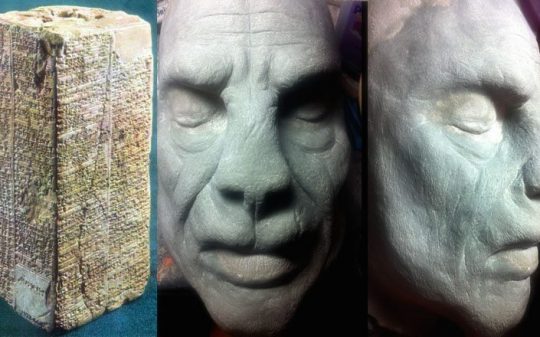The Sumerian King List describes how a group of enlightened beings descended from heaven to rule Earth. The total length of their domination: 242,100 years – how is that possible?
The Sumerian King List is an archaic stone tablet written in the Sumerian language. It gives us the names and reign lengths of the kings of Sumer, a region that encompassed the space now occupied by southern Iraq.
Compiled from several different clay tablets, the final part of the King List contains the names of historically attested rulers and cities but these are not the focus of this article. To the forbidden history community, the first, unattested kings on the list present greater interest.
Also known as antediluvian rulers, the first eight kings in the list totaled a reign of 242,100 years, in a mythical period before the great flood swept the area. Mainstream scholars dismiss the existence of these lords and their impossibly-long reigns, citing the fact that no archaeological discoveries support the unusual claims made by the stone tablets. Yet the cuneiform words are there:
“After the kingship descended from heaven, the kingship was in Eridug. In Eridug, Alulim became king; he ruled for 28800 years.”
After the first heavenly king’s tenure ended, the scepter fell into the hands of Alalngar, who ruled for 36,000 years. After him, it was En-men-lu-ana‘s turn to sit on the throne for a whopping 43,200 years. The next 5 kings all held office for very long periods of time, the shortest of which lasted ‘only’ 18,600 years.
The coming of the Great Flood – considered by some a global catastrophe – put an end to the reign of the mythical kings.
After the flood had swept over, and the kingship had descended from heaven, the kingship was in Kish.”
Kish was an ancient city in Sumer, home of the first historically-documented Sumerian dynasty. The kings in this dynasty had shorter reigns than the ones before them, but they still extended way beyond the expected life span of a human being in those days. The shortest reign belonged to Zamug, ‘the son of Barsal-nuna,’ who remained in power for 140 years.
For a long time, historians agreed these impossible timelines were the result of fiction, their reigns and deeds being hyperbolized to increase the significance of the ancient Sumerians in the eyes of neighboring peoples. By documenting their extremely old history, they could stake a legitimate claim to rule the land. But most historians dismiss the existence of the Anunnaki, the Children of Anu.
They too ‘came down from heaven’ to fulfill their own agenda on Earth. These beings had mastered space travel and although it is said they came here from the twelfth planet, Nibiru, their place of origin might as well have been somewhere else in the galaxy.
We don’t know for sure how man came to be on this planet. Perhaps he is the product of evolution and natural selection. But if humans were indeed created by someone, there is room for the Anunnaki genesis theory which claims man drew his first breath in the laboratories of Anunnaki geneticists Enki and Ninmah. If these beings were able to manipulate and transform Homo erectus into rational, intelligent humans, it goes without saying they were able to prolong their own lives.
This could mean the longevity of the reigns on the Sumerian King List could be interpreted as a reality rather than a metaphor. For all we know, these celestial beings could have been immortal or at least impervious to factors such as aging and disease. If they wielded enough power to be considered gods, it stands to reason they were immune to the troubles that end our lives short.
There is always the possibility that we’re looking for answers in the wrong places and the Sumerian King List is half-fable, half-fact. But amid this controversial topic, one thing is certain: our planet’s history sure is strange.






